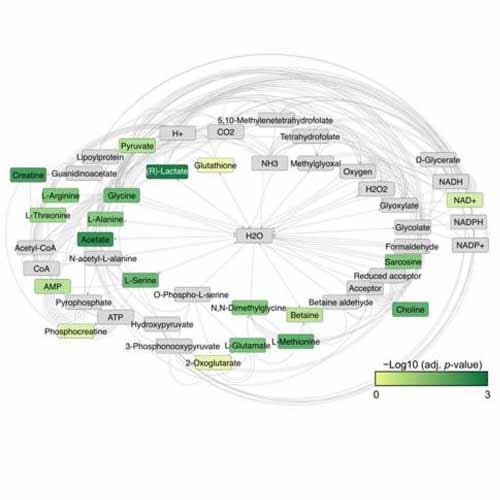Metabolic Analysis of Vitreous/Lens and Retina in Wild Type and Retinal Degeneration Mice
2021-02-26
Elisa Murenu, Sarantos Kostidis , Shibojyoti Lahiri , Anna S. Geserich ,Axel Imhof , Martin Giera and Stylianos Michalakis
Photoreceptors are the light-sensing cells of the retina and the major cell type affected in most inherited retinal degenerations. Different metabolic pathways sustain their high energetic demand in physiological conditions, particularly aerobic glycolysis. The principal metabolome of the mature retina has been studied, but only limited information is available on metabolic adaptations in response to key developmental events, such as eye opening. Moreover, dynamic metabolic changes due to retinal degeneration are not well understood. Here, we aimed to explore and map the ocular metabolic dynamics induced by eye opening in healthy (wild type) or Pde6b-mutant (retinal degeneration 1, Rd1) mice, in which photoreceptors degenerate shortly after eye opening. To unravel metabolic differences emerging before and after eye opening under physiological and pathophysiological conditions, we performed nuclear magnetic resonance (NMR) spectroscopy-based metabolome analysis of wild type and Rd1 retina and vitreous/lens. We show that eye opening is accompanied by changes in the concentration of selected metabolites in the retina and by alterations in the vitreous/lens composition only in the retinal degeneration context. As such, we identify NAcetylaspartate as a potential novel vitreous/lens marker reflecting progressive retinal degeneration. Thus, our data can help elucidating mechanisms underlying key events in retinal physiology and reveal changes occurring in pathology, while highlighting the importance of the vitreous/lens in the characterization of retinal diseases.








